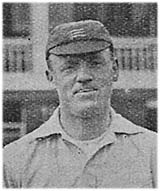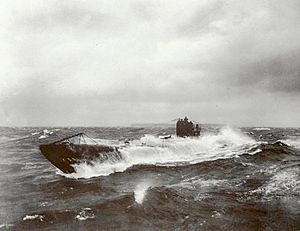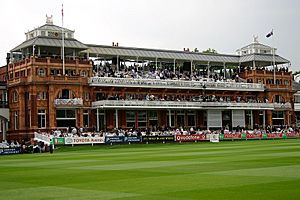Harry Lee (cricketer) facts for kids
 |
||||||||||||||||||||||||||||||||||||||||
| Personal information | ||||||||||||||||||||||||||||||||||||||||
|---|---|---|---|---|---|---|---|---|---|---|---|---|---|---|---|---|---|---|---|---|---|---|---|---|---|---|---|---|---|---|---|---|---|---|---|---|---|---|---|---|
| Full name |
Henry William Lee
|
|||||||||||||||||||||||||||||||||||||||
| Born | 26 October 1890 London, England |
|||||||||||||||||||||||||||||||||||||||
| Died | 21 April 1981 (aged 90) London, England |
|||||||||||||||||||||||||||||||||||||||
| Batting | Right-handed | |||||||||||||||||||||||||||||||||||||||
| Bowling |
|
|||||||||||||||||||||||||||||||||||||||
| Role | All-rounder | |||||||||||||||||||||||||||||||||||||||
| Relations |
|
|||||||||||||||||||||||||||||||||||||||
| International information | ||||||||||||||||||||||||||||||||||||||||
| National side | ||||||||||||||||||||||||||||||||||||||||
| Only Test (cap 258) | 13 February 1931 v South Africa | |||||||||||||||||||||||||||||||||||||||
| Domestic team information | ||||||||||||||||||||||||||||||||||||||||
| Years | Team | |||||||||||||||||||||||||||||||||||||||
| 1909–1934 | MCC | |||||||||||||||||||||||||||||||||||||||
| 1911–1934 | Middlesex | |||||||||||||||||||||||||||||||||||||||
| Umpiring information | ||||||||||||||||||||||||||||||||||||||||
| FC umpired | 153 (1935–1946) | |||||||||||||||||||||||||||||||||||||||
| Career statistics | ||||||||||||||||||||||||||||||||||||||||
|
||||||||||||||||||||||||||||||||||||||||
|
Source: CricketArchive, 18 August 2011
|
||||||||||||||||||||||||||||||||||||||||
Henry William "Harry" Lee (born October 26, 1890 – died April 21, 1981) was a professional English cricket player. He played first-class cricket for the Marylebone Cricket Club (MCC) and Middlesex County Cricket Club from 1911 to 1934. Harry Lee also played one Test match for England in 1931.
He was an all-rounder, meaning he was good at both batting and bowling. Lee was a right-handed batsman. He bowled with his right arm, using both off break and slow-medium pace styles. He scored over 1,000 runs in a season thirteen times! Lee was part of the teams that won the County Championship in 1920 and 1921. In his first-class career, he scored 20,158 runs and took 401 wickets.
Harry Lee's career was sometimes overshadowed by other faster-scoring batsmen. His two younger brothers, Jack and Frank, also played first-class cricket. They moved to Somerset when they couldn't get into the Middlesex team. In 1931, all three brothers scored centuries in the same season. This was the first time three professional brothers had done this in first-class cricket! Two years later, they were all involved in a single play: Harry was caught by Frank off Jack's bowling. When he passed away in 1981, Harry Lee was the second-oldest living Test cricketer.
Contents
Becoming a Cricketer
Harry Lee was born in Marylebone, London, on October 26, 1890. He was the oldest of three brothers, and all of them grew up to play first-class cricket. His father was a greengrocer and coal merchant who loved following cricket.
As a boy, Harry practiced cricket by bowling at lamp-posts. He once said that if you can bowl out a lamp-post nine times out of ten, you won't miss a real wicket! His school encouraged his talent. At St. Thomas's School, the headmaster, Mr. Despicht, would give a penny to any boy who could bowl him out. Harry did this often. Mr. Despicht also taught Harry to focus on bowling a good length. Harry mostly played as a bowler in school.
After school, Harry worked with his dad as a greengrocer. But he loved cricket more. He wrote to the Marylebone Cricket Club (MCC) asking for a job at Lord's Cricket Ground.
Starting at Lord's
In 1906, Harry was invited for a trial at Lord's with about 25 other boys. He bowled for Alfred Atfield and the head groundsman, Tom Hearne. Harry said his first over was terrible, but he got better as his nerves calmed down. He was chosen as one of five ground staff boys.
As a ground boy, Harry had many chores. He swept, dusted, cleaned seats, prepared nets, and marked the pitch. On match days, he sold scorecards or worked the scoreboard. There wasn't much time for the boys to practice their own game. But some players, like England internationals Teddy Wynyard and Albert Trott, gave Harry advice.
In 1909 and 1910, Harry started to get noticed by Middlesex County Cricket Club. He scored runs for the Middlesex Colts and the MCC. In 1911, he got his first chance to play for Middlesex in two County Championship matches. He batted at number eleven and didn't get to bowl much.
Playing for Middlesex
Harry got more chances in 1912, playing seven times for Middlesex. In his first game against Warwickshire, he took his first first-class wicket by catching Charles Baker off his own bowling. He took five wickets in that match.
In 1913, Harry joined the MCC bowling staff. He played only three times for Middlesex that season. In one match, he scored 35 runs and helped his team avoid the follow-on. His captain, Pelham Warner, was impressed and gave him his county cap.
In 1914, Harry played almost twice as many first-class matches. When the First World War started in August, many players joined the army. Harry was promoted to open the batting for Middlesex. He scored his first century in first-class cricket against Nottinghamshire, scoring 139 runs. He shared a big partnership of 183 runs with Patsy Hendren, who also scored a century.
World War I Experience
At first, Harry didn't think the war would affect his cricket. But he soon changed his mind. He joined the army on September 1, 1914. He was part of the London Regiment.
A Prisoner of War
Harry was sent to France in February 1915. He fought in the Battle of Neuve Chapelle in March. In May, he was part of another attack called the Battle of Aubers Ridge. During this attack, Harry was shot in the leg. The bullet broke his leg bone.
He lay between the battle lines for three days, and people thought he had died. A memorial service was even held for him. But after three days, German soldiers found him. They took him to a hospital in Valenciennes. He stayed there for six weeks, unable to get out of bed.
Then he was moved to a hospital in Hannover. Harry started to get better quickly. A fellow prisoner told him to pretend his injury was worse than it was. This helped him get chosen to return to England. He started his journey home on October 1, 1915.
In England, Harry found out that one of his legs would be permanently shorter. He was told he might not be able to fight or play cricket again. He was discharged from the army in December 1915. He received medals for his service, including the Silver War Badge. Middlesex County Cricket Club paid for him to see a specialist. He was able to play cricket again, even scoring a century in a match in 1916.
Coaching in India

After leaving the army, Harry worked as a clerk. This job gave him time to play cricket. In 1917, he decided to go to India to work as a coach. He almost boarded a ship that was later torpedoed, but he was moved to another ship at the last minute. His new ship also faced danger from a German U-boat in the Mediterranean Sea, but it made it safely to India.
In India, Harry coached football and cricket for the Maharaja of Cooch Behar. He played a few first-class matches there. In his first match, he took five wickets for only eleven runs. In November 1918, he played for England against India. He also scored his only century in India, making 104 runs in a match.
Back to County Cricket
Even with his war injury, Harry returned to England in 1919 to play for Middlesex again. The County Championship matches were shorter that year, which Harry didn't like. But he still scored over 1,000 runs for the first time in his career. He scored four centuries that season, including two in one charity match against Surrey.
In 1920, the championship went back to three-day matches. Harry had a great season as a batsman. He scored centuries in two matches in May. Against Sussex, he scored 119 runs. In that same match, all four of Middlesex's top batsmen scored centuries! This was the first time this had ever happened in first-class cricket. Harry also took eleven wickets in that match, completing his first ten-wicket haul. He was one of only eight Middlesex cricketers to score a century and take ten wickets in the same match.
Later that season, Harry scored his first double century, making 221 runs not out. He scored 1,518 runs in 1920. Middlesex won the County Championship that year. Harry was praised for his "all-round excellence" because he scored many runs and took 40 wickets.

Harry's great performances put him in the running to tour Australia with the English team, but he wasn't chosen. Instead, he went to South Africa to play and coach. In 1921, he scored over 1,500 runs again. He made his highest career score of 243 runs not out against Nottinghamshire. He also had his best season as a bowler, taking 72 wickets. Middlesex won the County Championship again.
The next few years were not as good for Harry. He didn't score as many runs. But in 1926, he started coaching in Cape Town, South Africa, during the winters. This helped his batting form improve.
Harry had a great comeback in 1928 and 1929. He scored 1,715 runs in 1928 and 1,995 runs in 1929, which was his best season ever. In 1928, he was chosen to play for the "Players" team in a famous match against the "Gentlemen". He scored 56 runs. In 1929, he scored a century in both innings of a match against Lancashire. He also scored his third and final double century, making 225 runs against Surrey.
His Only Test Match
In the winter of 1930–31, Harry coached in Grahamstown, South Africa. The English team (MCC) was touring there and had many injured and sick players. The England captain, Percy Chapman, asked Harry to join the team.
Harry played in four tour matches. His only Test appearance was in the fourth Test against South Africa. He opened the batting and scored 18 and 1 run. The match ended in a draw.
During the match, one of the schools Harry coached claimed he had broken his contract. Harry said he had permission to leave, but the MCC didn't agree. Because of this, Harry never received his official England cap or blazer. However, Jack Hobbs gave him an England touring tie as a small gift.
Later Career and Retirement
Even in his forties, Harry continued to play regularly for Middlesex in the early 1930s. In 1931, he scored 1,291 runs. Both of his brothers, Jack and Frank, also scored a first-class century that season. This was the first time three professional brothers had all scored centuries in the same season! Two years later, in a county match, Harry was caught out by Frank off Jack's bowling.
Harry continued to score over 1,000 runs in 1932 and 1933. But in 1934, Middlesex decided to drop him to make way for younger players. He still played for the MCC and scored a century against Cambridge University. He was briefly called back to Middlesex in August and scored a final century, making 119 runs against Warwickshire. Even though he played well in his last match, Middlesex ended his contract.
In his 437 first-class matches, Harry Lee scored 20,158 runs. He made 38 centuries and scored over 1,000 runs in a season 13 times.
After his playing career, Harry became an umpire. He umpired first-class cricket from 1935 until 1946. Then he coached at Downside School from 1949 to 1953. He often visited Lord's Cricket Ground throughout his life. When he died in 1981, he was England's second-oldest living Test cricketer.
Playing Style
Harry Lee himself said he wasn't a "brilliant youngster" like other famous cricketers. He saw himself as an "ordinary, average county cricketer." But his numbers show he was much more than that. His 18,594 first-class runs for Middlesex rank him eleventh all-time for the county. He is also one of only seventeen cricketers to score over 5,000 runs and take over 300 wickets for Middlesex.
Cricket experts have said that his statistics don't fully show how good he was. The pitch at Lord's Cricket Ground, his home ground, was not always easy for batsmen. If he had played on a different ground, his numbers might have been even better. Harry batted with a noticeable crouch and mainly scored runs on the leg side. His style wasn't always exciting to watch, but it was very effective. While other players got more attention for their flashy styles, Harry Lee was praised for his toughness and courage.

